Like I mentioned in my first article, the heart is the second most important organ after your brain. That’s because it pumps blood all over the body constantly for your entire life. Blood is mostly water, which as you’ll recall is a nutrient itself, but it also serves as a liquid medium for all the other vital substances to move freely through our circulatory system. These other substances include oxygen and all of the nutrients we talked about in the nutrition article. But how does all of this happen, and how do the choices you make impact heart health and good circulation? By the end of this article, you will be able to answer these questions like a pro.
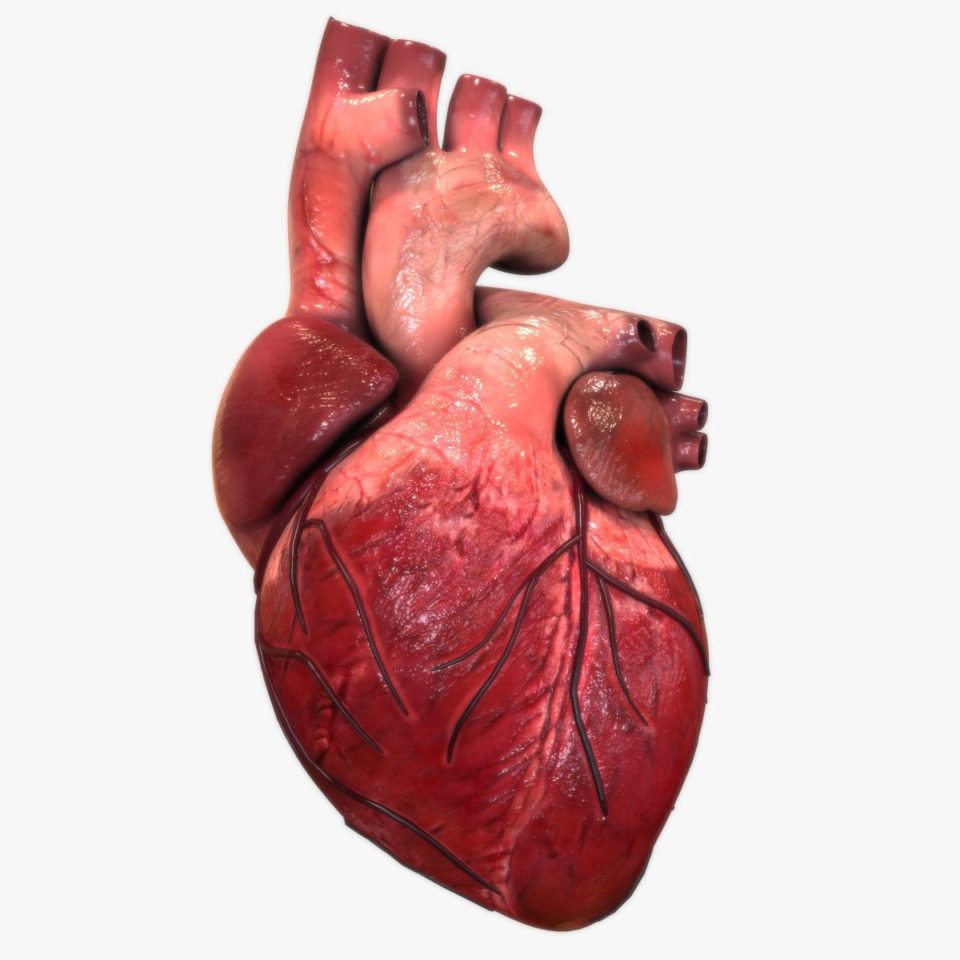
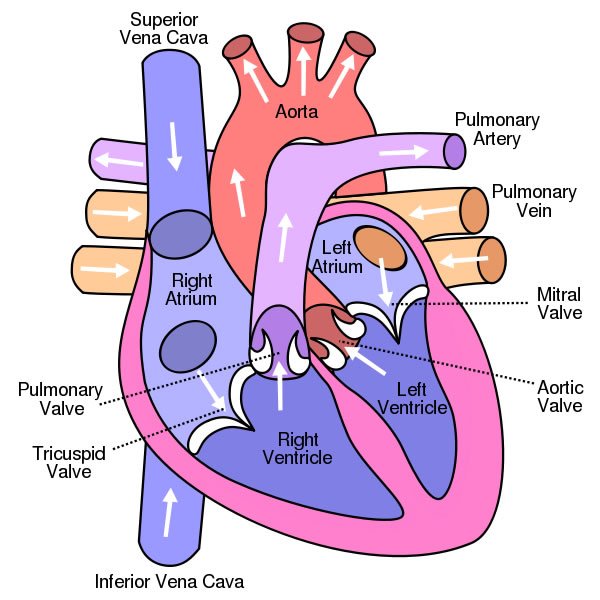
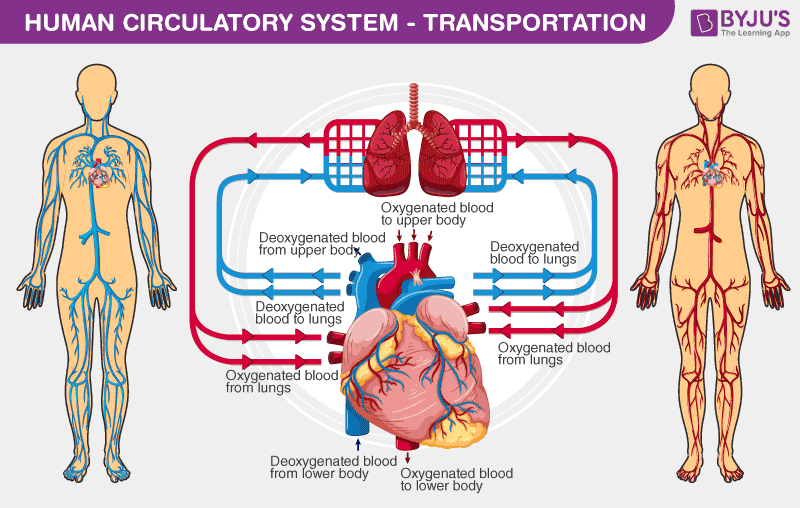
The above pictures are a real human heart and two diagrams showing its different parts and how blood moves through the body. The heart is a thick, fist-sized piece of muscle with chambers and tubes. The chambers fill with blood and when the muscles contract, the blood gets sent through the tubes to the rest of the body. This is done in a very systematic way. The first important thing to understand is that our body needs oxygen constantly. Blood carries oxygen to every part of our body using red blood cells, which give blood its red color. Once the oxygen is dropped off, the red blood cells need to gather more, which they do at the lungs every time we breathe. For this reason the heart has two sides – the right side sends blood to the lungs, and the left side sends blood everywhere else.
Let’s start the cycle at the right atrium, using the above diagram for reference. This is where blood returns to the heart to be sent to the lungs for more oxygen. You may have heard or felt the heart go “bum bum” and then there is a pause before the next beat. This pause is the relaxed phase, when blood enters the atrium. The heart has four valves that prevent blood from flowing backwards. Each “bum” is a valve snapping shut, so after the first “bum,” the blood has been squeezed from the right atrium to the right ventricle, and after the second “bum” the blood has been squeezed out of the right ventricle and into the pulmonary arteries. “Pulmonis” means lungs in Latin, so these arteries carry the blood to the lungs, where they pick up oxygen before returning to the heart. We’re halfway there!
The oxygen-rich blood now travels through the pulmonary veins into the left atrium. Similar to the right side, the left atrium squeezes blood to the left ventricle, followed by a “bum” of the valve snapping shut, and then the second “bum” signifies the last valve closing after the left ventricle squeezes the oxygen-rich blood into the aorta. The aorta is like an interstate highway, and it branches off billions of times into smaller roadways by which the blood travels to every part of the body besides the lungs. Finally, after the oxygen is dropped off, the blood travels through the vena cava back to the right atrium, and the cycle begins again. Not too bad, right? Your heart does this about every second for your ENTIRE LIFE, even while sleeping, and that’s pretty incredible. It knows to do this because of special nerve cells that are controlled by the brain, and the brain can change how fast and how hard the heart pumps at a moment’s notice depending on what you are doing.
Now that you understand the cardiac cycle, it’s time to learn about blood pressure. We’ve all heard that high blood pressure is bad for our health, but so is low blood pressure. Why is that? You’re about to find out after a quick physics lesson (quick and painless, I promise). Pressure is defined as force divided by area, meaning that if you increase the force, decrease the area, or both, pressure goes up. Imagine you are getting a shot at the doctor’s office. How small is the needle? Only 0.028 inches in diameter, which is very small. So the doctor doesn’t need a lot of force to apply enough pressure to break the skin and give you the medicine. Now think about how much bigger a candy cane is. Could the doctor push a candy cane into your skin just as easily? Certainly not! One other essential thing to know about pressure is that molecules always want to move from high to low pressure. That’s why if you poke a hole in the side of a balloon full of water, the water will shoot out. Gravity doesn’t move sideways – the water just doesn’t like being under a lot of pressure (does anyone?).
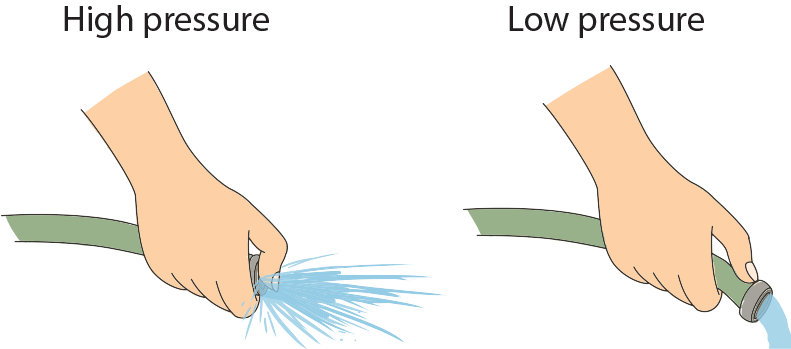
Look at the above picture and tell me which way you want your blood to flow through your body. I’ll give you a hint: not like the left side. A normal blood pressure should be close to 110/70, but what do those numbers mean? They actually measure the pressure in the aorta at two different times: the first number is the pressure when the aorta is engorged with blood pumped from the heart, and the second number is the pressure when the aorta is more relaxed. Remember that the aorta delivers blood to the whole body besides the lungs, so maintaining a healthy aortic blood pressure is crucial. If it’s too high, the heart valve can’t open and no blood flows out, which can lead to a heart attack or stroke. If it’s too low, then blood can leave the heart but it doesn’t have the force to reach your brain, muscles and everywhere else it needs to go. That’s why you die when you lose too much blood – blood flow goes from a steady stream to a tiny trickle.
Now that we know why a normal blood pressure is so important, how do we keep it normal? It is very important to drink enough water each day to keep our blood pressure up, though our kidneys are amazing at knowing exactly how much water they can get rid of at any given time. It is far more common for people to have problems with high blood pressure, rather than low. There are several culprits, the most common of which are poor diet, smoking, and stress.
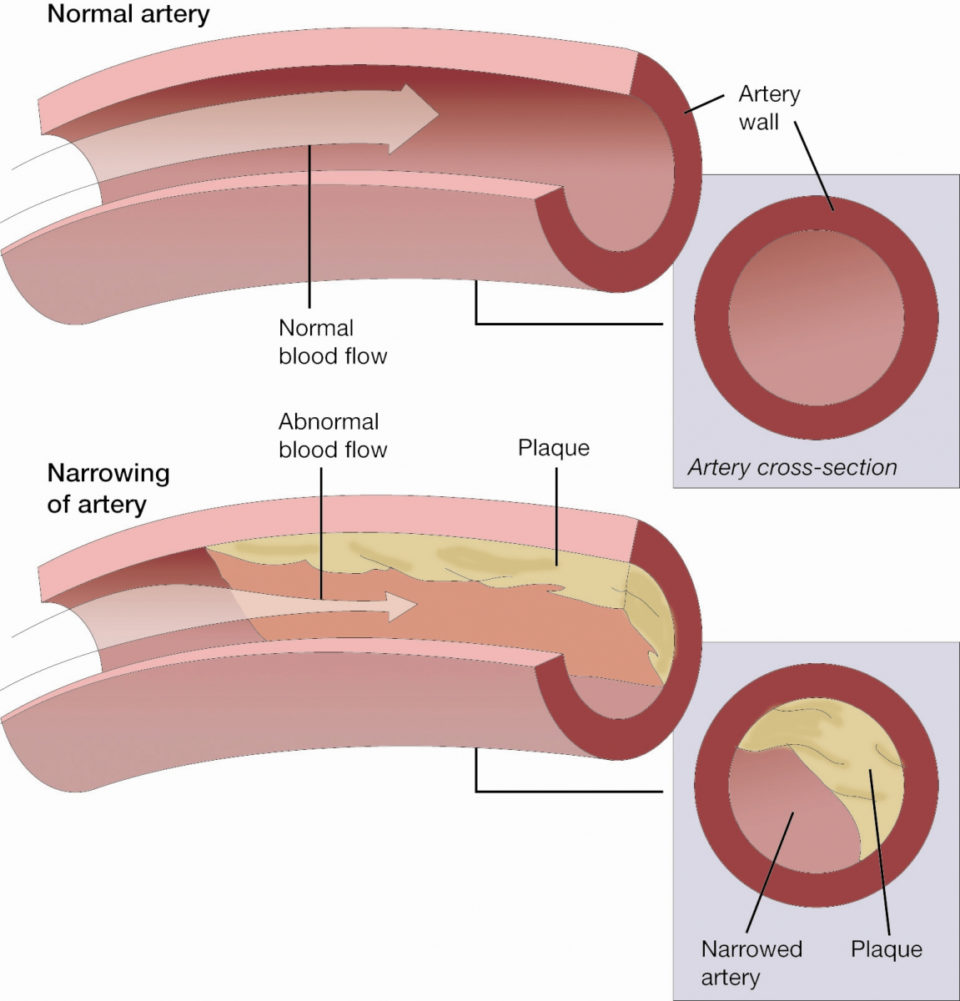
The above picture shows a build up of fatty plaques in an artery. Which hole is bigger, and therefore easier, for blood to flow through? That’s right, the healthy artery. Blood pressure goes way up when the blood has to work harder to move through a narrow opening. These plaques can accumulate from poor diet, smoking or even a sedentary lifestyle. Another dietary modification that can help lower blood pressure is reducing salt intake – sodium, as you’ll recall, is an electrically charged particle that attracts water. More water in your bloodstream equals higher blood pressure, simple. Stress causing high blood pressure is a bit more complicated, but it has to do with survival instincts and a temporary need for more blood flow. The important takeaway is that stress is bad, and I’ll cover stress reduction techniques some other time.
I know this month’s article was a little heavy, but I promise that a better understanding of heart health is a big step towards a longer, happier life. Next time, I’ll talk about the benefits of exercise and give you some examples of easy ways to stay active. See you then!
You must be logged in to post a comment.